Fortune: The Real Cost of Cheap Groceries
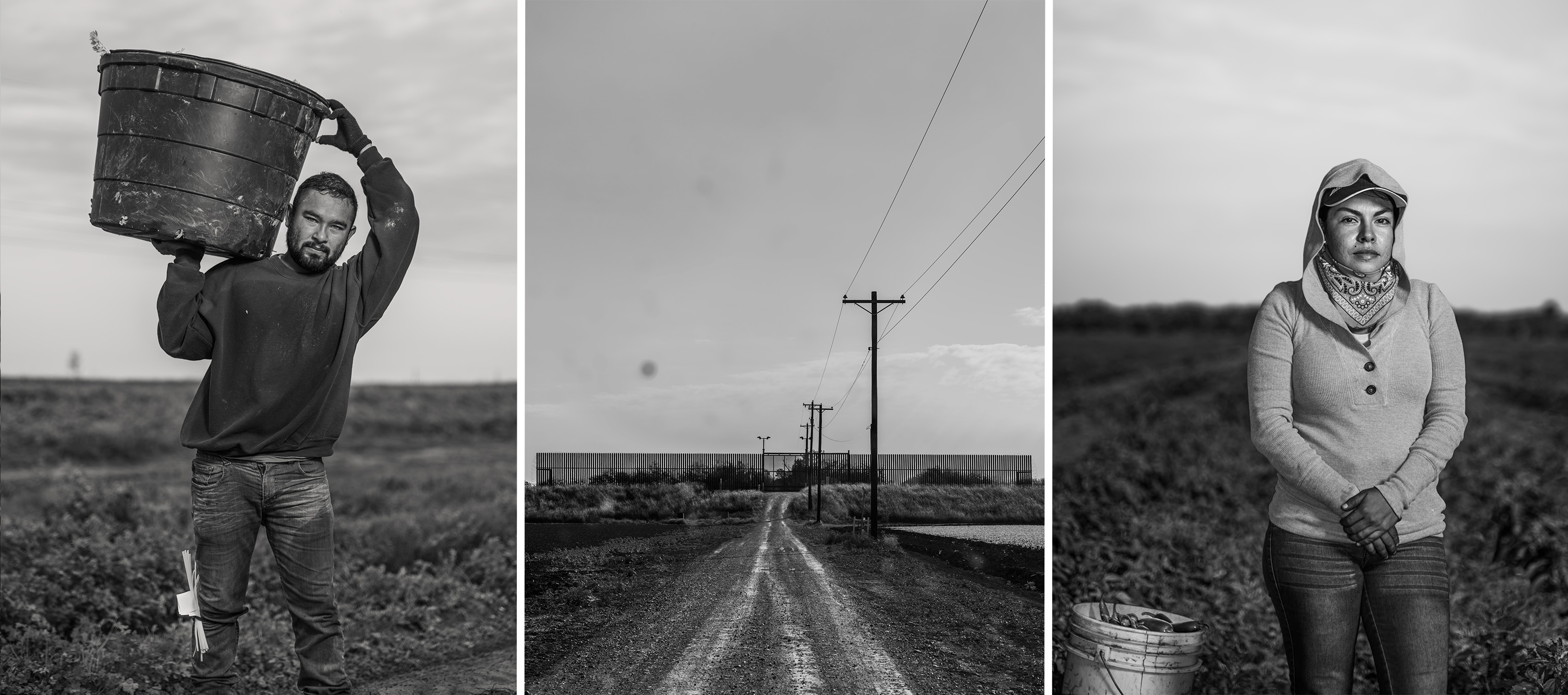
Left, Jose, 25, cuts and ties cilantro, and Beatriz (far right), 31, picks jalapeños in the Rio Grande Valley. They work not far from one of the border fences (center).
Dan Winters for Fortune Magazine
by Beth Kowitt and Dan Winters | January 14, 2019
There’s a price war raging in the grocery aisle—but the people who actually grow and gather our food may be the battle’s true losers. Meet the produce pickers of Texas’s Rio Grande Valley, whose penny-per-bunch harvest helps stock your pantry for less.
Our food is cheap—by some measures, cheaper than it’s ever been. Americans now spend less than 10% of their disposable income on what they eat. When researchers first began tracking this figure some 90 years ago, it was closer to 25%.
But the inexpensive supermarket fare that consumers now expect doesn’t come without a hidden human cost. To see, firsthand, the true price of keeping those shelves stocked, Fortune traveled down to the Rio Grande Valley—among the best areas in the country for growing food crops, and one President Trump put in the spotlight last week when he visited the region to make his case for the border wall.
Here along the southern-most tip of South Texas, farm work is mostly piecework: a penny or two for every bunch of cilantro cut and tied, $1.25 for every bucket of jalapeños picked.
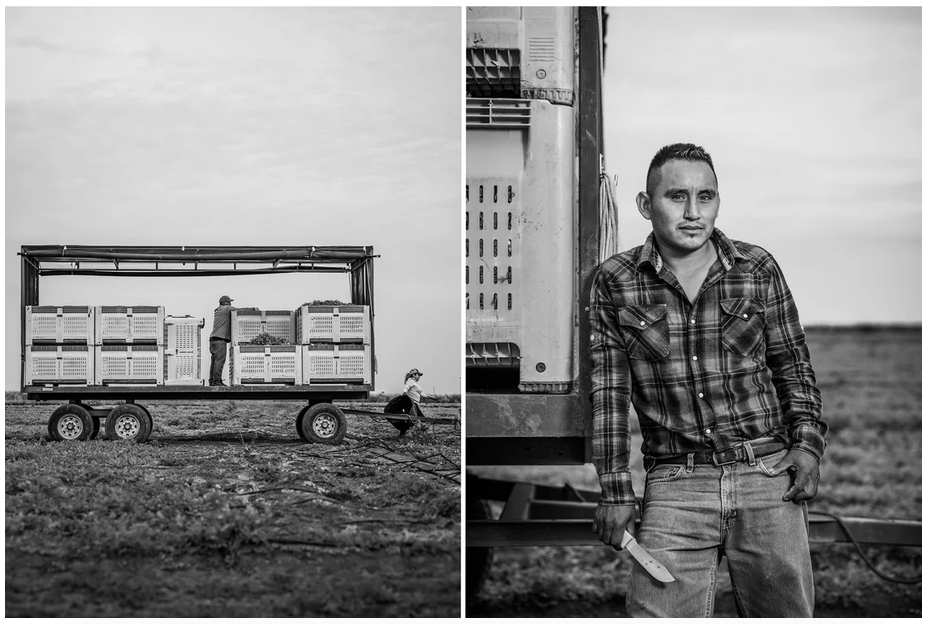
Left, harvested cilantro. Right, Antonio, 28, has been working in the fields for half his life.
Dan Winters for Fortune Magazine
For the whole agricultural ecosystem in the Valley, the harvest in late November marked the end of a tough season capping a painful year. Flooding in September and an early frost had led to a weak pepper harvest, and most of the workers in the field that day thought they’d walk away with no more than $30.
It’s a global phenomenon that the farming workforce comes from “poorer, foreign soils,” as labor experts describe it. In the U.S., Mexico has been a major supplier of agricultural workers since the middle of the 20th century, and today Mexican-born immigrants make up the vast majority of the farming labor force.
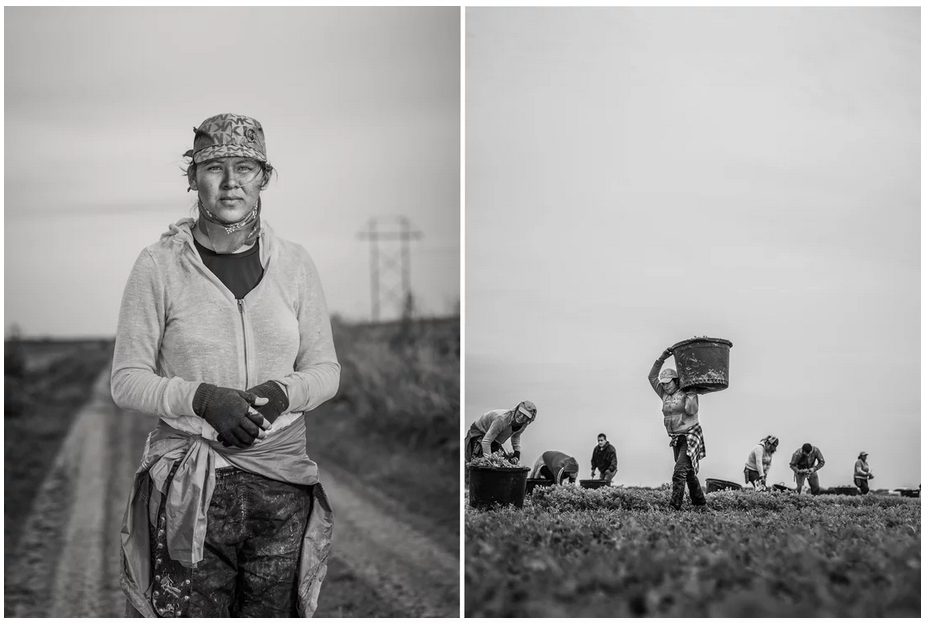
Left, Claudia, 20, works the cilantro harvest (right) in the Rio Grande Valley in South Texas.
Dan Winters for Fortune Magazine
Late fall in the Rio Grande Valley was no different. Many of the men working in the fields said they had crossed the border in search of better wages, sending home $200 of the $300 they might make in a good week to their families in Mexico. Most of the women, some of whom said they had come north to escape gang violence, are here with their children.
The pickers often hear about available work through Facebook and will carpool with neighbors and family to save on gas. The region’s warm climate supplies them with some kind of farm work income most months out of the year but when times are slow, house cleaning and lawn work help supplement. A few women had previously held jobs in the restaurant industry but had given it up for picking, which they said was more lucrative. Some workers mentioned their constant back pain—watermelons universally seemed to be the least favorite crop to harvest—and all talked about laboring in the fields so their kids, who they desperately wanted to stay in school, wouldn’t have to.
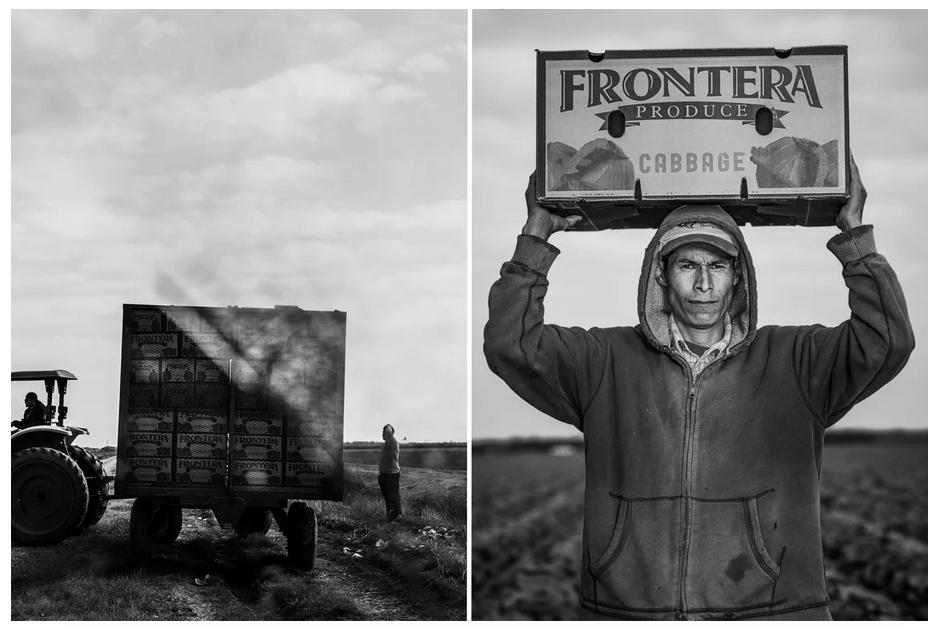
Left, the cabbage haul in South Alamo, TX. Right, Tito, 38, working in the field.
Dan Winters for Fortune Magazine
For the pickers, though, many could not see themselves doing anything else. “This is what I do,” says Maria, who at 35 had four children ranging in age from 3 to 19. “I don’t have any other way.”
The data suggests that the pickers will get their wish: Children of farm workers don’t tend to become farm workers, in large part because most would rather do anything else. “Workers move out of agriculture typically as soon as they can,” says J. Edward Taylor, a professor of agricultural and resource economics at U.C. Davis, who with his colleagues has written that “immigrants choose to work in the farm sector only when their options are more limited.” Even unauthorized workers spend less time in agriculture and more time in other sectors of the economy the longer they are in the U.S., he explains.
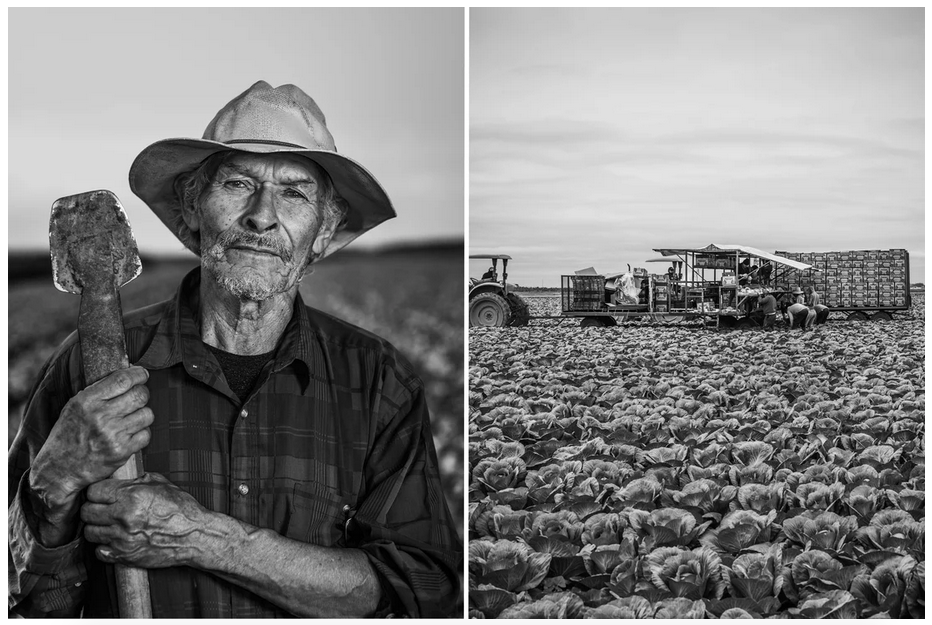
Left, Guillermo, 68, working on the cabbage harvest (right) in South Alamo, TX.
Dan Winters for Fortune Magazine
Farm work may be a hard, undesirable job but it is one that’s in high demand. Mexico’s dramatic decline in fertility rates and its investments in rural education has led to a reduction in the available workforce. Further complicating matters is the current U.S. political environment, in which unresolved policy questions about immigration and border enforcement could further diminish the labor pool. Indeed, Taylor and his colleagues posit that we may be approaching the end of the plentiful supply of labor in U.S. farming that has fueled the system for so long.
One proof point of rising demand: Wages for farm work have actually increased over the last few years. Average pay is about half that of non-farm work but increasing at a faster rate: a 10.4% increase between 2014 and 2018 versus 3.5% for similar blue-collar jobs outside of farming.
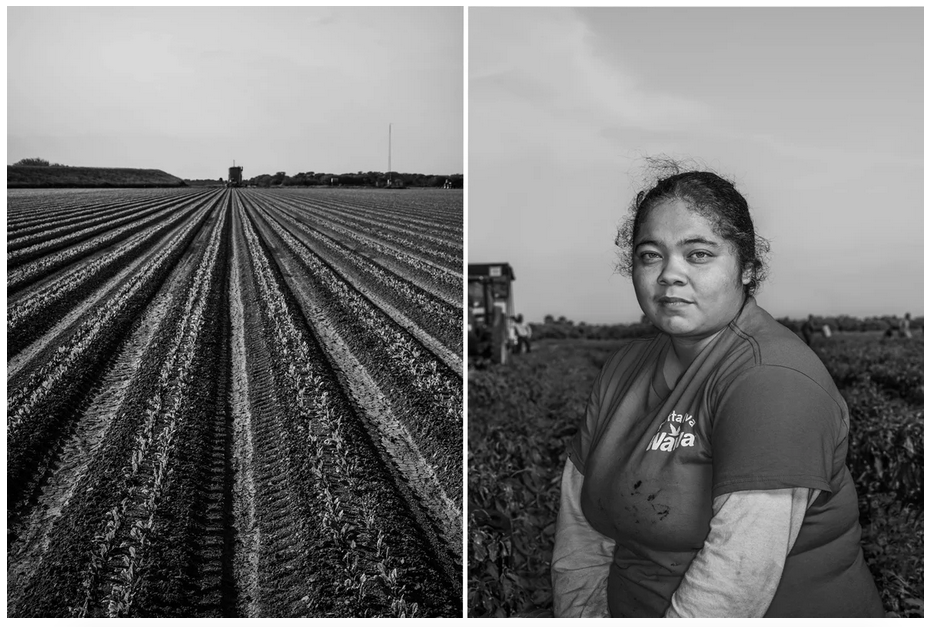
Left, the cabbage field post-harvest. Right, Valentina, 21, left her job in a restaurant to do farm work, which she says pays better.
Dan Winters for Fortune Magazine
Most farmers, however, say they don’t have the luxury of further increasing wages. The cilantro, jalapeños, and cabbages harvested that week in late November would make their way to the shelves of Walmart and Kroger—retailers, growers say, that are participating in an industry-wide supermarket price war that is pressuring everyone along the food chain. Meanwhile, because of a confluence of factors ranging from extreme weather to low commodity costs, farmers have seen their incomes decline by about 50% over the last five years.
“Farmers are being squeezed at the top by the folks they’re selling to,” says Taylor. “And that pressure gets passed down the chain.”
Fortune has chosen to identify farm workers by only their first names, regardless of their immigration status, in order to protect those workers who are unauthorized.